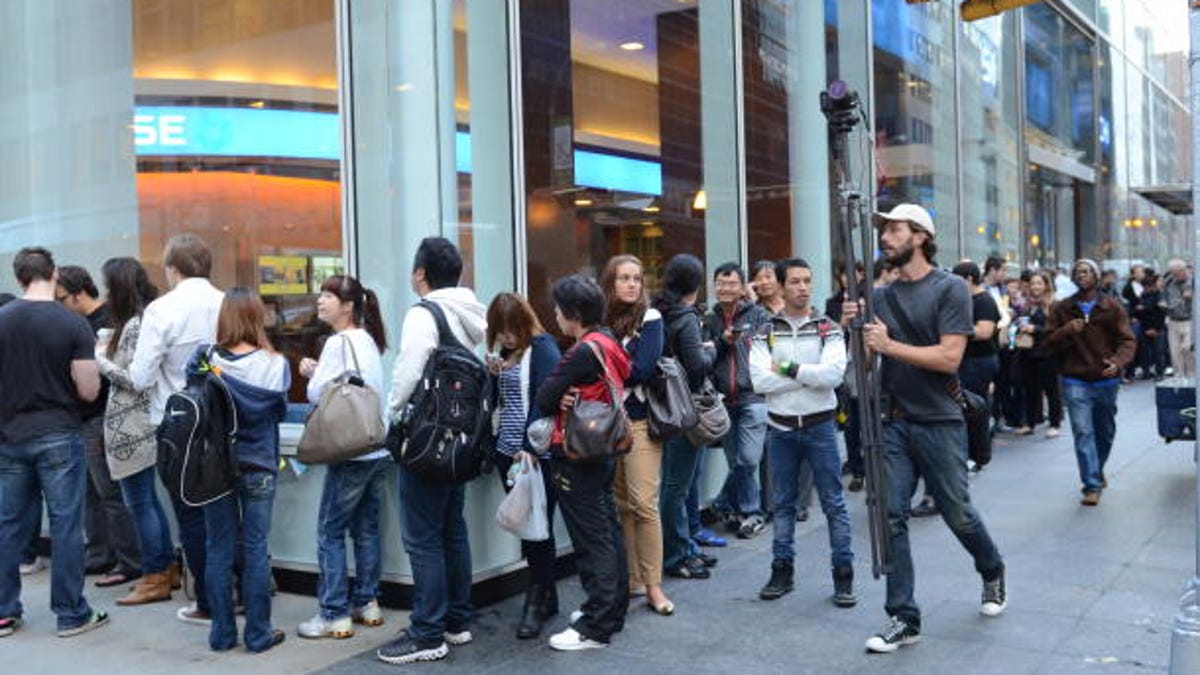iPhone 5's 5M units: Is this what a 'miss' looks like?
Apple's iPhone 5 enjoyed a gangbuster weekend debut. Still, the sales tally disappointed given the high advance expectations.

Earlier today, Apple announced the sale of 5 million iPhone 5s in its debut weekend. That was a lot better than the iPhone4S' first three days last year. Any way you slice it, that's a ton of product -- Nick Bilton of The New York Times noted quite correctly that that's more iPhones than the number of humans born in the U.S. in a single year. Indeed, Apple reported that demand exceeded the company's initial supply.
Still, in the run-up to the iPhone 5's general availability on Friday, expectations had been raised to the white hot point where the market got swept up in a state of -- well, let's say it -- irrational exuberance. Watching the lines of people waiting outside of Apple's stores, one of the more high-profile analysts who cover the firm, Piper Jaffrey's Gene Munster, went on record with a 10 million unit estimate. Given Apple's final weekend tally, that goes down as a big miss. Here's how Munster explained the discrepancy.
First, our sales expectation assumed that Apple would include all phones preordered online. We believe that this may have been up to 1 million additional units as units preordered after the middle of the first day were projected to be available in October. Second, we noted 1.25 days of Apple Retail inventory compared to 2.5 days during the 4S launch. Our 8 million estimate assumed full weekend availability and the counting of all online preorders. We believe that if supply were not a constraint and Apple included all preorders, the launch weekend number would have been closer to 7-8 million, assuming 1 million October preorder sales and an additional 1-2 million units at retail.
Some on Wall Street are using that as a reason to dump Apple -- the stock was down around 13 dollars by midday -- though given the shares' months-long climb, it furnished an easy rationalization to pocket profits. Sterne Agee analyst Shaw Wu called the market reaction "a classic case of near-term expectations getting out of touch with reality." For his part, Munster repeated his "overweight" rating on Apple shares, and a $910 price target, saying that he remains "comfortable with our 49 million unit December estimate."
If this sounds like history repeating itself, you're right. During the iPhone's debut in 2007, there was lots of chatter about product supply constraints during the initial weekend -- ditto for the iPad launch in 2010. Munster said that he believes the supply/demand equilibrium will get resolved by the end of the year.
We are monitoring availability and may need to reduce our September estimates, which assumed 8 million iPhone 5 unit sales; however, we also note that the phone is scheduled to be available in 22 additional countries on September 28th. We believe this suggests that Apple has rationed some supply for the additional country launches before the end of the month.
Of course, given Wall Street's manic-depressive nature, we might just as easily be talking about a sentiment turnaround 24 hours from now. Or not.
Correction: Due to an editing error, an earlier version of this article incorrectly registered the drop in Apple's stock today.

